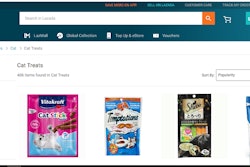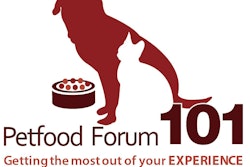
The investigation into a possible link between some ingredients in grain-free pet foods and atypical cases of canine dilated cardiomyopathy (DCM), announced by the U.S. Food and Drug Administration (FDA) in July 2018, has caused no small amount of concern for pet food companies, pet owners, veterinarians and retailers.
One of the main reasons, and a continuing source of confusion and frustration, is that so little is still known about why these cases of DCM have occurred and what role, if any, the foods the dogs were eating played. Perhaps the title of a new research paper coming out in the March 2019 issue of the Journal of Animal Science (already available online) best sums up the situation: “The association between pulse ingredients and canine dilated cardiomyopathy: addressing the knowledge gaps before establishing causation.”
As with many areas of pet food, especially for product types newer to the market, those knowledge gaps are key. Greg Aldrich, Ph.D., research associate professor and coordinator of the pet food program at Kansas State University and co-author of the new paper, addressed some of the gaps during a presentation at the American Feed Industry Association’s 12th Annual Pet Food Conference, February 12 in Atlanta, Georgia, USA.
Providing perspective on canine DCM incidence
First, though, Aldrich tried to put the situation in perspective. Grain-free pet food comprises at least 25 percent of the U.S. market, by his estimate. That seems on target, as the category now has a 45 percent share in the pet specialty channel alone, according to Maria Lange, client director at Nielsen; and in the mass market channel, where it’s becoming more prevalent, it reached US$1.1 billion in sales in 2018, a roughly 18 percent share. (Lange presented this data during a February 19 webinar on top pet food trends for 2019.)
The pet specialty channel overall had a 23 percent pet food market share in 2018, followed by mass at 20 percent, according to Packaged Facts, so those grain-free shares between the two channels average out to about 30 percent. Since other channels are not factored into this calculation, the 25 percent estimate makes sense.
As Aldrich explained, that means approximately 22 million dogs eating grain-free pet food: 25 percent of 90 million dogs in the U.S. identified by the American Pet Products Association’s latest pet ownership survey. Yet only 294 dogs had contracted DCM through mid-December 2018, according to FDA’s latest update. “This is literally a one in a million incidence,” Aldrich said.
Of course, to the owners whose dogs have suffered or tragically died, the significance can’t be measured. But to his point, it’s still a relatively small number of pets affected among all the ones in the U.S. eating grain-free pet food.
No cause and effect between grain-free pet food ingredients, DCM
Another key point made not only by Aldrich but also the Journal of Animal Science paper (including in its title), plus numerous industry experts, is that no direct cause and effect between grain-free pet food and these cases of DCM has been established – not even close. The initial FDA alert even said that, and the latest update includes this statement: “The agency has not identified specific recommendations about diet changes for dogs who are not displaying DCM symptoms.” Yet many consumers have perceived (and still do) a cause and effect relationship, raising their level of anxiety and questions.
Even a linkage between the DCM cases and some of the ingredients identified by FDA has not been established or proved. There has been an assumption (stated or implied) with the FDA alerts that DCM is influenced somehow by the dogs’ diets, “but we don’t know how or where,” Aldrich said. Similarly, the research paper discusses the “limited data being used to support linkage between DCM and pulse ingredients.” (I should note here that the research project was funded by Pulse Canada.)
Again, there are still far too many unknowns to establish or prove any causes for the DCM cases at this point.
Testing and research needed to address DCM situation
To “unpack the topic,” as Aldrich put it in his presentation, he covered areas that, each on their own could warrant a full presentation and, for that matter, a research study. They included taurine synthesis, ingredient composition, bioavailability of ingredients, fiber (particularly oligosaccharides) and other factors.
Since it is known that low levels of taurine can lead to development of DCM – though not all dogs in the recent cases had taurine deficiency – Aldrich spent a good amount of time on that amino acid. What may be most important, he said, and where perhaps at least some research should be focused, is on the relationship and interactions among taurine, methionine and cysteine/cystine, including bioavailability of each in the diet.
In summarizing his information, Aldrich answered his own question – “Is there anything wrong with grain-free ingredients?” – by saying probably not, though “caution is advised to use an upper limit on legumes” in formulations. He also warned that supplementing all dog foods with taurine at this point may mask other issues. On the other hand, supplementing with methionine or cyst(e)ine could be a reasonable solution if their availability in the diet is low.
Perhaps most importantly, he presented other tests for pet food manufacturers to consider: at minimum, an amino acid analysis of the finished product and, ideally, a full feeding study to verify that the pet food performs to target.
In terms of in-depth, ongoing testing and research needs, the paper he co-authored covers the “nutritional factors and physiological mechanisms that should be explored to establish causation between nutritional deficiencies and incidence of DCM; the factors that nutritionists should consider when formulating complete diets destined for long-term consumption; and the disadvantages of formulating protein and minimal amino acid (AA) recommendations rather than a balanced indispensable AA profile.”


















